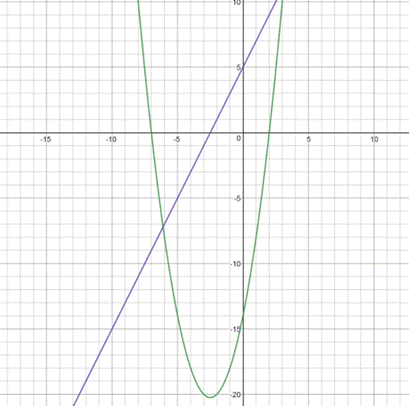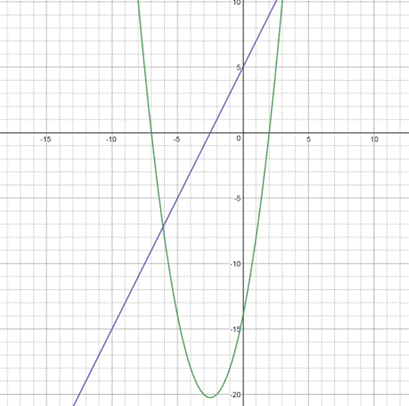
(a)
To find: the two number from 1 to 10.
(a)
Answer to Problem 43E
The numbers are
Explanation of Solution
The required two number can be select randomly between the 1 and 10.
Suppose selected numbers are
Therefore, the numbers are
(b)
To find: the graph of the obtained equation.
(b)
Answer to Problem 43E
The required graph is shown below.
Explanation of Solution
Given:
The general equation is
As the two selected numbers are
Substitute
Sketch the graph of the equation

Therefore, the required graph is shown above.
(c)
To find: the graph of the derivative of the function.
(c)
Answer to Problem 43E
The required graph is shown below.
Explanation of Solution
Given:
The function is
Consider the function.
Differentiate the function with respect to
Graph of the equation is drawn as,

Therefore, the required graph is shown above.
(d)
To find: the
(d)
Answer to Problem 43E
The
Explanation of Solution
Given:
The function is
Consider the graph.

As it is clear from the graph that the graph of derivative of the function cuts the vertical line
Therefore, the
(e)
To find: a simple way to predict the
(e)
Answer to Problem 43E
The simple way to find the
Explanation of Solution
Given:
The function is
Consider the function.
Expand the function with algebraic properties.
Here,
Substitute
So, result is verified.
Therefore, the simple way to find the
Chapter 3 Solutions
Calculus 2012 Student Edition (by Finney/Demana/Waits/Kennedy)
Additional Math Textbook Solutions
Calculus, Single Variable: Early Transcendentals (3rd Edition)
University Calculus: Early Transcendentals (4th Edition)
Calculus: Early Transcendentals (3rd Edition)
Precalculus: Concepts Through Functions, A Unit Circle Approach to Trigonometry (4th Edition)
 Calculus: Early TranscendentalsCalculusISBN:9781285741550Author:James StewartPublisher:Cengage Learning
Calculus: Early TranscendentalsCalculusISBN:9781285741550Author:James StewartPublisher:Cengage Learning Thomas' Calculus (14th Edition)CalculusISBN:9780134438986Author:Joel R. Hass, Christopher E. Heil, Maurice D. WeirPublisher:PEARSON
Thomas' Calculus (14th Edition)CalculusISBN:9780134438986Author:Joel R. Hass, Christopher E. Heil, Maurice D. WeirPublisher:PEARSON Calculus: Early Transcendentals (3rd Edition)CalculusISBN:9780134763644Author:William L. Briggs, Lyle Cochran, Bernard Gillett, Eric SchulzPublisher:PEARSON
Calculus: Early Transcendentals (3rd Edition)CalculusISBN:9780134763644Author:William L. Briggs, Lyle Cochran, Bernard Gillett, Eric SchulzPublisher:PEARSON Calculus: Early TranscendentalsCalculusISBN:9781319050740Author:Jon Rogawski, Colin Adams, Robert FranzosaPublisher:W. H. Freeman
Calculus: Early TranscendentalsCalculusISBN:9781319050740Author:Jon Rogawski, Colin Adams, Robert FranzosaPublisher:W. H. Freeman
 Calculus: Early Transcendental FunctionsCalculusISBN:9781337552516Author:Ron Larson, Bruce H. EdwardsPublisher:Cengage Learning
Calculus: Early Transcendental FunctionsCalculusISBN:9781337552516Author:Ron Larson, Bruce H. EdwardsPublisher:Cengage Learning





